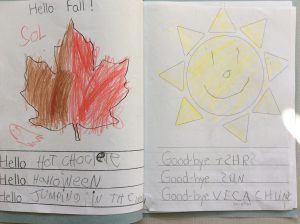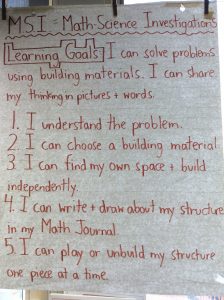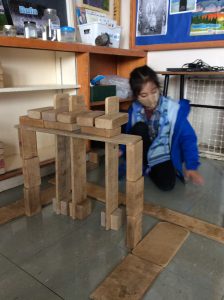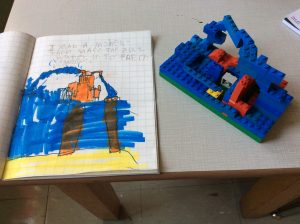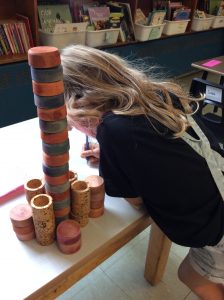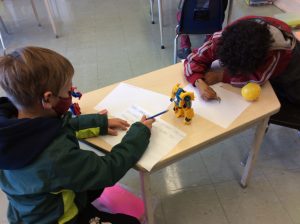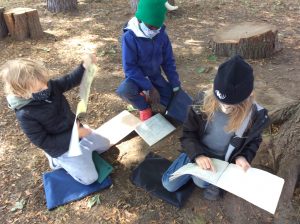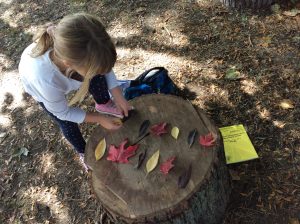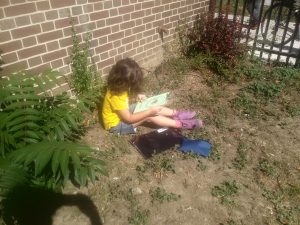It’s the end of July and I think I’m ready to start thinking about next year now. I haven’t fully shaken off last year yet – I’m not sure I ever will, to be honest – but it’s time, now, to start looking forward and thinking about the 2021-22 school year.
Ten years into my career, I’ve developed a few things I like to do to kick off the year and get to know my students.
Some context, before I share some of my start-up routines: I teach Middle French Immersion, which starts in grade 4. The students in this program come from many different schools (and occasionally from out-of-province/country). Some have been at my school since kindergarten, others come in as the only one from their previous school. Some of my routines are about getting to know a new school, feeling comfortable with new classmates, and settling some nerves at the beginning of an immersion program.
So. Here we go. A small taste of how I like to start off the year. I’m not going to take you minute-for-minute through my first day because I’m not that consistent, but I’ll share the things I find really helpful and important in the early days.
Before School Starts
Typically, my board doesn’t give information to families about their new teachers or classes before the first day of school. That said, if I were able to reach out to families ahead of time, as I know some boards do this, I would want to record a short video introducing myself and giving a quick look at the classroom.
The morning of the first day of school, I print off a final class list along with student photos so that I can easily recognize them on the yard when they arrive.
With respect to class decor, I absolutely do not overdecorate my classroom before school starts. In fact, if you look at this photo, you’ll note that my classroom is actually pretty bare bones on day 1:

That’s because our walls are typically full of student work and co-created anchor charts. No point in putting up decorations for the first day only to replace them a few days later! I also find that too much on the walls is very distracting and overwhelming for students, especially when they’re just starting out in a second language program.
First Day of School
I put small nameplates on student desks so they can find a spot and sit down. These are not permanent nametags. I usually just use cardstock or bristol board to make a folded stand-up card. On students’ desks are all of the supplies they’ll be getting – notebooks, duotangs, etc. (My board provides these to students rather than asking families to purchase them.)
Our very first activity as a class is to go around and introduce ourselves. I never read names from the class list on the first day. It’s important that everyone learn how to say everyone else’s name properly and the best way to do that is to have students say their names themselves.
Two things to note on student intros: I invite students to share their pronouns if they’re comfortable but make it clear that they are not required to. I also make sure to tell them that they can pass on the intro if they are very uncomfortable speaking in front of everyone first thing. It is very rare that anyone is unwilling to share their name, though.
Boîte de moi
Early in the day on the first day of school, I like to do this activity to give students a little idea of who I am. Many of my students come from feeder schools and haven’t met me before, and the others have likely only seen me as a duty teacher or maybe their Core French teacher in the past.
The idea behind this activity is simple: I fill a shoebox with items that represent me, then share what I brought with the class and tell them a little about what those items mean to me. For example, I’m an avid reader, so I often include a favourite book. I play a lot of board games, so I may include dice. I love coffee, so I’ll often stick a favourite coffee mug into the box, too. A photo of my family, of course.
Over the first two weeks, students then bring in their own shoeboxes of personal items (or photos/drawings of them) to share. Students are usually really engaged in this task. Very occasionally, I have a student or two who may be uncomfortable with this task, so I make sure to tell everyone at the outset that they can let me know (with a note on my desk, an e-mail from a parent, a private convo during recess, etc.) if they would prefer an alternative.
Some alternative options I provide:
- Recording a video from home with Flipgrid that will only be visible to me.
- Presenting at recess in front of just me or one or two peers they’re comfortable with.
- Creating a different kind of presentation, e.g. Slides, that accomplishes the same thing.
Note for fellow FSL teachers: We spend the first week learning and practicing the language they’ll need to be able to share their boxes in French. It’s a great way to get a quick sense of what their rehearsed language level is.
Student Info Forms
I try not to overload students or their families with paperwork in the first week, but there is one set of forms that I always make sure to do: a set of questions for students to complete at school on the first day and a general info questionnaire for parents/guardians.
The questions on the student form change slightly from year to year, but here are some things that I always ask:
- Name they’d like me to call them in class
- Pronouns they’d like me to use in class
- Something they feel really good about at school
- Something they find challenging at school
- Something they’re looking forward to or want to do this year
For parents/guardians, it’s a bit more standard from year to year:
- Contact info and preferences (yes, even if the office has this info, because there is ALWAYS someone whose number/e-mail has changed and they’ve forgotten to inform the office)
- Access to technology/internet at home (useful to know during COVID, mainly)
- If the student has an updated hearing/eyesight test (this is always question #1 when bringing a student to team, so I like to just ask everyone right at the start of the year)
- Whether the family has any particularly busy or late nights with extracurriculars (I then try to avoid planning big assessments or events on the day after these late nights, if possible)
- What they’d like to see as part of their child’s education for the year
Nametags and Labels
In the first few days of school, I ask students to create their own nametag that will be their permanent nametag throughout the year. This gives them an opportunity to have some agency with what name is on it, what it looks like, etc. It’s also a really interesting insight into who they are, as I typically see a range of styles from plain printing in black marker to elaborate designs in full colour.
In years where I’ve had assigned seating, like last year, the nametags get attached to the visible side/front of the desk so that they’re visible to educators in the room. In years where I’ve used flexible seating (which is honestly every non-COVID year at this point in my career!), we make them stand-up nametags on cardstock. They’re used, then, to denote where students have chosen to sit for the period and can be moved around as needed.
Because I teach FSL, I also like to have students label key parts of the classroom in French to facilitate oral communication – la porte, le tableau, l’horloge, les fenêtres, etc. It sounds like nothing, but it honestly makes SUCH a difference for them to have the word right there on the object in front of them – and at the junior level, they seem way more likely to pay attention if they’re the ones who made it, not me.
Unstructured Outdoor Play Time
I always, always make a point of scheduling a little bit of unstructured time outside on the first two days of school. I try to keep it short – going out 10-15 minutes early for recess, for example, or heading out early at the end of the day and playing in the yard.
It’s important that this time is unstructured because I want to see what students do with the time. I provide some equipment for them, but otherwise they have free choice of activity. While they’re playing, I make notes.
- Who already has a social group?
- Who doesn’t seem to have many connections in the class?
- What kinds of activities do they choose?
- Who prefers to hang out with me and chat?
- Who ignores all of the equipment and opts to sit down and read, walk and talk, etc. instead?
It’s an incredibly useful exercise and informs many of my early decisions on groupings for class activities. The reason why I say to keep it short is because in my program, there are always students who don’t have any connections in the class, so I don’t want to put them through half an hour of not knowing what to do with themselves and feeling uncomfortable.
Hopefully that gives you all a little idea of some things you could do in the first few days with your class to get to know them and gather some key info for your early planning. If you have any questions or are looking to bounce ideas off of someone, you’re always welcome to contact me! I can be reached on Twitter @rollforlearning or by e-mail at srothgeb@gmail.com – and I’m always open to chatting about teaching.





